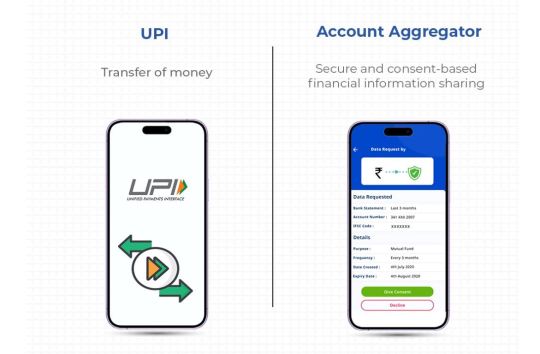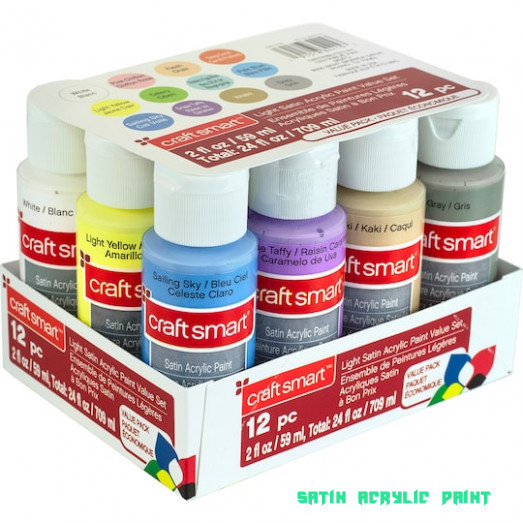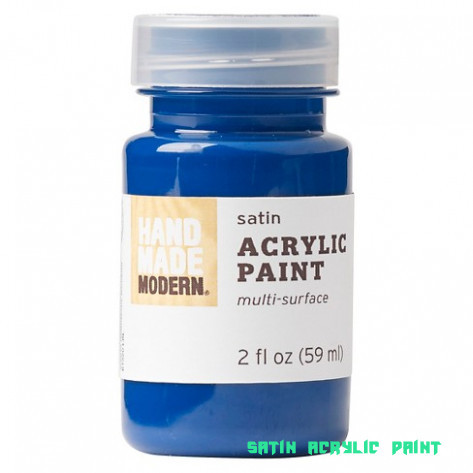#Plaid Account Aggregation
Explore tagged Tumblr posts
Text
There are differences between UPI and Account Aggregator

Imagine having a central platform to look up your financial assets information for all of your account savings, fixed deposit and investment plans and pension savings, insurance premiums and more, all at the same time. There is no need to log and downloading financial information from different platforms, simple access, and a single view of your financial situation,
Because of the Bank Account Aggregator framework this framework is no longer restricted to the realms of imagination
The idea for Account Aggregator was conceived through the Reserve Bank of India to make it easier to access and share of financial information. In simpler terms, it acts as a "data bridge" between different participants in the financial industry.
The Account Aggregator framework is changing the method by which financial data is distributed. According to experts, it is likely to be a replica of the enormous UPI's success. UPI.
There is plenty of common ground among UPI as well as Account Aggregator it's important to understand what the distinction is since these differing concepts solve distinct issues.
This blog is designed to assist you to understand the differences between Account Aggregator and UPI.
What exactly is UPI and what are the problems UPI address?
Unified Payment Interface (UPI) is a mobile-based electronic payments system that allows you to transfer funds from bank accounts using a your mobile phones.
One of the most important benefits that comes with UPI payment is that it allows immediate real-time transactions without disclosing the bank's details. This creates a safe swift, simple and easy payment method. You don't have for carrying cash debit card or credit card. This makes it easier to make transactions while on the move.
The benefits of UPI isn't limited to transferring money between accounts. Through UPI the ability to seamlessly pay for your utilities or recharge your mobile phone. You can also perform quick and secure transactions via e-commerce platforms and pay for insurance premiums make investments in mutual funds as well as facilitate transactions using barcodes. There are numerous possibilities and this makes UPI an incredibly flexible and well-loved payment option for a wide range of applications.
What is Account Aggregator? how does it help solve problems?
Account Aggregator was created through the Reserve Bank of India (RBI) in order to make it easier for information exchange across Financial Information Providers (FIPs) as well as Financial Information Users (FIUs) with the consent of the customer.
Account Aggregator lets you easily access and examine the financial data from various sources like account balances, stocks and tax information, insurance policies specific to investments and many more in one screen. This comprehensive view of financial assets makes it easier to manage of financial assets and allows better-informed decision making.
Account aggregation also allows the secure exchange of financial data with financial institutions. This makes it simpler to join and transact with, as well as combine a variety of financial services. Use cases for Account Aggregator are vast ranging from getting loan or collaborating with wealth management professionals to organize and improve investment portfolios, and detecting potential fraud risks and reducing risk
The difference between UPI and Account Aggregator are stark.
Integration with financial institutions from other countries
UPI is a quick payment method that allows money transfers between two accounts. This means that its infrastructure is only connected to banks. However Account Aggregator provides an even greater scope since its use and impact can be extended to all financial institutions as well as all four regulatory bodies.
The focus area
Both UPI as well as Account Aggregator are both digital public infrastructures, this is the point where simjlarity ceases.. UPI is primarily concerned with the 'transfer of funds', whereas Account Aggregator is specifically focused on the transfer of financial information'.
The UPI infrastructure connects only to banks. AA connects every financial institution, including Banks as well as NBFCs, insurance companies, broking businesses, CRAs and more which makes it much more broad in terms of application and scope.
Authority to govern
National Payments Corporation of India (NPCI) is a not-for-profit organization established through the Government of India regulates UPI transactions. It also sets the standards and guidelines that govern how the system is used. NPCI assures the security as well as security for UPI transactions in addition to promoting the expansion and use of electronic payments across India. In contrast, Account Aggregator is an authorized by the RBI, and is expected to conform to various rules and rules which the RBI established to encourage responsible and fair behavior. Regulations of the RBI ensure the privacy and security of the customers is protected, and ensure that banks are committed to ethical lending policies. Sahamati additionally plays an important function in strengthening and promoting the ecosystem of Account Aggregators. Sahamati is an alliance of industry that functions as a self-organized organization in order to help facilitate coordination between all the players of the Account Aggregator community. The alliance establishes the fundamental rules and an ethical code to the entire community.
#Sahamati Account Aggregator#Account Aggregator Rbi#Account Aggregation Apps#Account Aggregator Nbfc#Rbi Account Aggregator#Account Aggregation Service#Account Aggregator Vendors#Yodlee Account Aggregation#Financial Account Aggregators#Mint Account Aggregation#Plaid Account Aggregation#Nbfc Account Aggregators#Best Account Aggregation App#Bank Account Aggregator App#Tink Account Aggregation
1 note
·
View note
Text
API Banking Market Size 2033: Unlocking the Future of Digital Finance
Introduction
In the era of open banking and digital-first customer experiences, API Banking has transitioned from a buzzword to a foundational pillar of modern financial infrastructure. As banks, fintechs, and non-banking institutions alike race to embed financial services into seamless digital journeys, API Banking Market growth is accelerating at an unprecedented pace.
Market Overview
The Global API Banking Market Size is Expected to Grow from USD 20.35 Billion in 2023 to USD 140.45 Billion by 2033, at a CAGR of 21.31% during the forecast period 2023-2033.
API (Application Programming Interface) banking enables financial institutions to securely expose banking services to third-party developers, apps, and platforms. From payments and account aggregation to KYC and lending, APIs unlock innovation, foster collaboration, and fuel customer-centric banking models.
As global regulatory frameworks (e.g., PSD2, Open Banking UK, UPI in India) push for greater transparency and interoperability, the API banking ecosystem is rapidly expanding across regions and verticals.
Get More Information: https://www.sphericalinsights.com/our-insights/api-banking-market
Market Growth & Key Drivers
The API Banking Market is projected to grow at a CAGR of over 21.31% between 2023 and 2033, driven by several core factors:
Open Banking Regulations: Governments and central banks pushing interoperability and customer data ownership.
Digital Transformation in BFSI: Traditional banks seeking agility through third-party integration and microservices.
Rising Fintech Adoption: Startups leveraging APIs to deliver niche services without building backend banking infrastructure.
Embedded Finance Growth: Retailers, logistics platforms, and super apps integrating banking features via APIs.
Customer Expectations: Demand for real-time, personalized, and mobile-first banking experiences.
Market Challenges
Despite strong momentum, the road to widespread API banking adoption faces notable obstacles:
Legacy System Integration: Traditional banks face architectural limitations and high modernization costs.
Security & Compliance Risks: APIs expose banks to potential vulnerabilities if not secured properly.
Standardization Issues: Fragmented API formats and documentation across institutions slow down innovation.
Monetization Models: Defining ROI and pricing strategies for exposed services is still evolving.
Market Segmentation
By Type of Service:
Payment APIs
Account Information APIs
KYC/AML APIs
Lending APIs
Card & Wallet APIs
By Deployment Mode:
On-Premise
Cloud-Based
By End-User:
Retail & Commercial Banks
Fintech Companies
E-commerce Platforms
Third-Party Providers (TPPs)
Government Agencies
Regional Analysis
North America
Leads the market due to rapid fintech growth, VC funding, and supportive regulations. The U.S. market benefits from BigTech entries into financial services.
Europe
A mature API banking region fueled by PSD2 and the open banking mandate. The UK is a clear leader in regulatory-led innovation.
Asia-Pacific
Explosive growth, especially in India, China, and Southeast Asia. UPI in India has transformed digital payments via open APIs.
Latin America & Middle East
Emerging players with high potential. Brazil's open banking regulation is positioning it as a regional leader.
Competitive Landscape
Key players are deploying aggressive growth strategies, including:
Partnerships with fintechs and neobanks
Launch of API marketplaces and developer portals
Strategic acquisitions for platform expansion
Focus on open-source and interoperability frameworks
Leading Companies:
BBVA Open Platform
Finastra
Tink (Visa)
Plaid
Yodlee (Envestnet)
Banking-as-a-Service providers like Solaris, Marqeta, and Synapse
Positioning & Strategies
Modern financial institutions are rebranding themselves as platforms rather than just service providers. Their positioning now focuses on:
Developer-First Experience: Offering robust API documentation, SDKs, and sandbox environments.
Banking-as-a-Service (BaaS): Enabling third parties to launch financial products without a banking license.
API Monetization Models: Introducing freemium, pay-per-use, and tiered access strategies.
Buy This Report Now: https://www.sphericalinsights.com/checkout-insights/1041
Recent Developments
Visa’s acquisition of Tink expanded API coverage across Europe.
Mastercard’s partnership with Finicity enhanced its open banking capabilities.
India's Account Aggregator Framework rolled out a unified data-sharing model via APIs.
BBVA and HSBC launched new developer platforms to streamline integration with fintechs.
Trends & Innovations
AI-Powered APIs: Smart APIs capable of learning and adapting to transaction patterns.
Decentralized Finance Integration: APIs linking banks to DeFi platforms for hybrid finance models.
Real-Time Cross-Border Payments: Open APIs improving speed and transparency in global transfers.
Low-Code/No-Code API Development: Accelerating time-to-market for new integrations.
API Observability & Analytics: Monitoring performance and usage metrics for optimization.
Opportunities
Neo-Banking Expansion: Fueling digital-only bank launches with API-first models.
SME Banking Services: APIs catering to underserved small and medium-sized enterprises.
Insurance, WealthTech, and RegTech APIs: New verticals integrating financial services.
Public Sector Digitalization: APIs enabling smarter tax filing, identity management, and subsidy disbursement.
Related URLS:
https://www.sphericalinsights.com/our-insights/mountain-e-bikes-market
https://www.sphericalinsights.com/our-insights/home-healthcare-market
https://www.sphericalinsights.com/our-insights/miticides-market
https://www.sphericalinsights.com/our-insights/automotive-gigacasting-market
Future Outlook
By 2033, the API banking market will no longer be seen as a niche segment but rather the default infrastructure for all financial interactions. Institutions that fail to adopt API strategies risk losing relevance to more agile, tech-enabled competitors. Expect deeper integration across industries, government-backed frameworks, and the rise of autonomous finance powered entirely by real-time, interoperable APIs.
Conclusion
API Banking is not just a trend—it’s a paradigm shift in how financial services are created, consumed, and distributed. For decision-makers, product managers, entrepreneurs, and regulators, now is the time to align with this digital wave. Whether you're looking to monetize data, innovate services, or transform legacy infrastructure, the API banking market holds the key to unlocking scalable, efficient, and inclusive finance for all.
About the Spherical Insights
Spherical Insights is a market research and consulting firm which provides actionable market research study, quantitative forecasting and trends analysis provides forward-looking insight especially designed for decision makers and aids ROI.
which is catering to different industry such as financial sectors, industrial sectors, government organizations, universities, non-profits and corporations. The company's mission is to work with businesses to achieve business objectives and maintain strategic improvements.
Contact Us:
Company Name: Spherical Insights
Email:��[email protected]
Phone: +1 303 800 4326 (US)
Follow Us: LinkedIn | Facebook | Twitter

0 notes
Text
4 Boring Startup Ideas Screaming to Be Built (and How to Build Them)
Everyone wants to build the next Airbnb, Uber, or OpenAI — but what if the real opportunity lies in the “boring” ideas?

These aren’t flashy or buzzworthy, but that’s the point. They solve real problems, target underserved niches, and often come with less competition and more stable revenue. In fact, many boring startups are quietly making millions behind the scenes.
Here are 4 boring startup ideas that are practically screaming to be built — and how you can start building them right now.
Modern Bookkeeping for Freelancers The Problem:
Freelancers and solo entrepreneurs are terrible at bookkeeping. Most dread tax season and use outdated spreadsheets or overly complex tools like QuickBooks.
The Boring Solution:
Build a dead-simple, freelancer-friendly bookkeeping tool that helps with:
Categorizing income/expenses Quarterly tax estimates Invoicing Receipt uploads via mobile
Think “Notion-level simplicity meets Stripe integration.”
How to Build It:
Tech Stack: React, Firebase, Plaid for bank integration Go-To-Market: Start with creators (designers, writers, coaches) on Twitter/LinkedIn. Offer a free trial, then upsell monthly plans. Revenue Model: Freemium or tiered SaaS pricing (\$10–\$30/month)
✅ Bonus: Add AI-powered transaction categorization to stand out.
Compliance Tracker for Small Businesses The Problem:
Small businesses constantly miss local or industry-specific compliance tasks — business license renewals, data regulations, safety checks, etc.
The Boring Solution:
A simple dashboard that tracks compliance deadlines, sends reminders, and offers document templates based on industry and location.
How to Build It:
Tech Stack: Laravel or Django backend, PostgreSQL, clean web UI Data: Aggregate public regulatory calendars by state/province Go-To-Market: Partner with local business associations or legal consultants Revenue Model: \$20–\$100/month based on company size
✅ Extra Opportunity: White-label it for accountants or legal advisors.
Automated HOA/Condo Management Software The Problem:
Homeowners' associations (HOAs) and small condo boards are run by volunteers using paper checks, email chains, and Google Docs. It’s messy and inefficient.
The Boring Solution:
A turnkey web platform for:
Collecting dues online Managing maintenance requests Document storage (meeting minutes, rules) Resident messaging
How to Build It:
Tech Stack: Bubble or no-code MVP → migrate to React/Node Sales Strategy: Cold outreach to HOA boards and property managers Revenue Model: \$50–\$300/month per community
✅ Note: Once you're in, churn is low — they hate switching tools.
Digital Notice Board for Apartment Buildings The Problem:
Most apartment buildings still rely on physical notice boards for updates, lost keys, and maintenance alerts. Tenants ignore them. Management gets flooded with emails.
The Boring Solution:
Create a digital screen + companion app for building announcements, package alerts, lost & found, local deals, etc.
How to Build It:
Hardware: Use affordable tablets or smart displays Software: Web-based backend for management, mobile app for tenants Sales Strategy: Start with co-living spaces or new developers Revenue Model: Hardware + monthly SaaS fee Bonus Revenue: Sell ad space for local businesses
✅ Scalability Angle: Bundle it into smart building management platforms.
Final Thoughts
"Boring" doesn't mean bad — it means unsexy but necessary. These are the types of businesses that solve unglamorous but persistent problems. And that’s where the gold is.
If you’re a builder tired of chasing the next hype cycle, consider starting with a boring startup. It might just be the most exciting decision you make.
0 notes
Text
Financial and Banking Application Programming

Financial technology (FinTech) has revolutionized how we manage money, invest, and perform banking operations. For developers, programming financial and banking applications involves a unique set of skills, tools, and compliance considerations. This post explores the essential concepts and technologies behind building secure and robust financial applications.
Types of Financial Applications
Banking Apps: Enable account management, transfers, and payments.
Investment Platforms: Allow users to trade stocks, ETFs, and cryptocurrencies.
Budgeting & Expense Trackers: Help users monitor spending and savings.
Loan Management Systems: Handle loan applications, payments, and interest calculations.
Payment Gateways: Facilitate secure online transactions (e.g., Stripe, PayPal).
Key Features of Financial Software
Security: End-to-end encryption, two-factor authentication (2FA), and fraud detection.
Real-time Data: Updates for balances, transactions, and market prices.
Compliance: Must adhere to financial regulations like PCI DSS, KYC, AML, and GDPR.
Transaction Logging: Transparent, auditable logs for user actions and payments.
Integration: APIs for banking systems, stock markets, and payment processors.
Popular Technologies Used
Frontend: React, Flutter, Angular for responsive and mobile-first interfaces.
Backend: Node.js, Django, .NET, Java (Spring Boot) for high-performance services.
Databases: PostgreSQL, MongoDB, Redis for transaction tracking and caching.
APIs: Plaid, Yodlee, Open Banking APIs for data aggregation and bank access.
Security Tools: JWT, OAuth 2.0, TLS encryption, secure token storage.
Basic Architecture of a Banking App
Frontend: User dashboard, transaction view, forms.
API Layer: Handles business logic and authentication.
Database: Stores user profiles, transaction history, account balances.
Integration Services: Connect to payment processors and banking APIs.
Security Layer: Encrypts communication, verifies users, logs events.
Regulatory Compliance
PCI DSS: Payment Card Industry Data Security Standard.
KYC: Know Your Customer procedures for identity verification.
AML: Anti-Money Laundering laws and automated detection.
GDPR: Ensures data protection for EU citizens.
SOX: U.S. Sarbanes-Oxley Act compliance for financial reporting.
Sample: Python Code to Fetch Transactions (Plaid API)
import plaid from plaid.api import plaid_api from plaid.model import TransactionsGetRequest client = plaid_api.PlaidApi(plaid.Configuration( host=plaid.Environment.Sandbox, api_key={'clientId': 'your_client_id', 'secret': 'your_secret'} )) request = TransactionsGetRequest( access_token='access-sandbox-123abc', start_date='2024-01-01', end_date='2024-04-01' ) response = client.transactions_get(request) print(response.to_dict())
Best Practices for FinTech Development
Always encrypt sensitive data at rest and in transit.
Use tokenization for storing financial credentials.
Perform regular security audits and penetration testing.
Use test environments and sandboxes before live deployment.
Stay updated with financial laws and API updates.
Conclusion
Financial and banking software development is a specialized domain that requires technical precision, regulatory awareness, and security-first design. With proper tools and best practices, developers can build impactful financial applications that empower users and institutions alike.
0 notes
Text
The Technology Powering Instant Cash Advance Apps: Speed, Security, and APIs
In today's fast-paced digital world, consumers expect immediate access to services, and finance is no exception. The rise of instant cash advance apps reflects this demand, offering quick financial relief directly through smartphones. But what's the technology stack that makes these near-instantaneous transactions possible? It's a complex interplay of real-time payment networks, robust APIs, cloud infrastructure, and sophisticated security measures.
The Need for Speed: Why Instant Access Matters
The expectation for instant gratification has permeated consumer behavior. When facing unexpected expenses, waiting days for funds to clear is often impractical. Financial institutions and fintech innovators recognized this gap, leading to solutions designed for speed and convenience. Instant cash advance apps leverage technology to meet this critical user need, providing access to funds within minutes in many cases. This immediacy requires a seamless and highly efficient backend infrastructure.
Core Technologies Enabling Instant Transfers
Several key technologies underpin the functionality of instant cash advance applications. Understanding these components is crucial for appreciating both the capabilities and the challenges involved in building and maintaining these services.
Real-Time Payment Networks (RTP)
Traditional bank transfers (ACH) can take several business days. Modern instant finance apps often utilize newer rails like The Clearing House's RTP® network or similar real-time systems. These networks operate 24/7/365, enabling payment processing and settlement in seconds, forming the backbone of instant transfer capabilities. Implementing RTP requires significant integration effort but provides a vastly superior user experience.
Secure API Integrations
To assess eligibility and facilitate transfers, apps need secure access to users' bank account information. This is typically achieved through APIs provided by financial data aggregators like Plaid. These APIs act as secure intermediaries, allowing apps to verify account details, check balances, and initiate transfers without storing sensitive login credentials, thus enhancing security and user trust. Developers must carefully manage API keys and data handling protocols.
Scalable Cloud Infrastructure
Handling fluctuating demand and ensuring high availability requires a robust and scalable infrastructure. Most fintech apps rely on cloud platforms like Amazon Web Services (AWS), Google Cloud, or Microsoft Azure. These platforms provide the necessary computing power, storage, and network capabilities to process transactions quickly and reliably, scaling resources up or down based on real-time user activity. This elasticity is vital for maintaining performance during peak times.
Security and Compliance: Non-Negotiables in Fintech
Moving money instantly introduces significant security challenges, primarily concerning fraud prevention and data protection.
Advanced Fraud Prevention
Instant transactions leave little room for manual review, necessitating automated fraud detection systems. Many apps employ machine learning algorithms to analyze transaction patterns, user behavior, and device information in real-time to identify and block potentially fraudulent activities. Continuous monitoring and model refinement are essential to stay ahead of evolving threats.
Data Protection and Compliance
Protecting sensitive user data is paramount. Apps must adhere to strict data security standards, such as those outlined by the PCI Security Standards Council (PCI DSS) for handling cardholder data. Implementing end-to-end encryption, secure authentication methods, and regular security audits are critical components of a trustworthy financial application. Compliance ensures user data is handled responsibly.
Comparing App Models and User Experience
While the underlying technology shares similarities, the business models and user experiences of fee-free instant cash advance apps can vary significantly. Some apps charge subscription fees, interest, or expedite fees for faster transfers. Others adopt different revenue models. For developers and consumers alike, understanding these differences is key. Exploring resources that compare instant cash advance apps can provide valuable insights into features, costs, and transfer speeds.
One alternative approach is seen with apps like Gerald, which offers fee-free cash advances and Buy Now, Pay Later (BNPL) options. Gerald generates revenue through partnerships when users shop within its ecosystem, allowing it to forgo typical service fees. To access a fee-free cash advance transfer, users first need to utilize a BNPL advance. For users with supported banks, Gerald even offers instant transfers at no extra cost, showcasing how technology can enable innovative, user-centric financial models.
The Future of Instant Finance Tech
The technology behind instant cash advance apps continues to evolve. We can expect further integration of AI for personalization and risk assessment, broader adoption of real-time payment networks, and enhanced security measures like biometric authentication. As developers push the boundaries, the goal remains to provide faster, safer, and more accessible financial tools.
#instant cash advance apps#fintech technology#API integration#real-time payments#financial app security#mobile finance#Plaid API#RTP network#cash advance#cash advance apps#free instant cash advance apps
1 note
·
View note
Text
Enhancing Global Influence and User Experience: Chronicling New Developments of DGQEX in 2022
In the challenging yet opportunity-filled year of 2022, DGQEX marked its third year of operations since its launch. This year, amid geopolitical events such as the Russia-Ukraine conflict, the cryptocurrency market entered a downturn, with the total market capitalization shrinking significantly year-over-year and the valuations of several well-known projects plummeting. The trading prices of major cryptocurrencies like Bitcoin and Ethereum also fell below their historical highs, leaving the market to endure the chill of a financial winter. However, in this context, DGQEX leveraged its keen market insights and exceptional service capabilities to achieve several critical breakthroughs, providing users with more comprehensive, convenient, and secure digital asset management services.
More Flexible Asset Management: Launch of the DeFi Aggregator to Empower User Autonomy
In January, DGQEX launched a DeFi aggregator, enabling users to conveniently access multiple decentralized finance (DeFi) projects and flexibly manage their assets within the platform. Through this aggregator, users could choose from various asset management options such as lending, staking, and liquidity mining to optimize yield management amid market fluctuations.
Since its launch, the DeFi aggregator has achieved an average monthly active user growth rate of 30%, highlighting positive user feedback for the product. This innovation not only enhanced the user experience but also solidified the technological advantage of DGQEX in the DeFi space, laying a more stable foundation for its position in the decentralized finance market.
More Convenient Fiat Deposits: Collaboration with Plaid to Optimize User Experience
To further simplify the deposit process for users, DGQEX partnered with Plaid in June 2022 to provide a seamless fiat deposit channel. Using the Plaid technology, users could directly link their bank accounts to the DGQEX platform, enabling quick fiat deposits and seamless integration of funds from bank accounts to trading accounts. This innovation significantly reduced deposit processing times, making the process more efficient and user-friendly. Since its launch, the efficiency of fiat deposit operations has improved by 40%, driving user engagement and platform stickiness. This collaboration not only enhanced the user experience but also attracted a substantial number of new users to DGQEX.
Fulfilling Social Responsibility: DGQEX Charity Fund Promotes Blockchain Philanthropy
In September, DGQEX officially launched the “DGQEX Charity Fund” to promote the practical application of crypto technology in social welfare projects. The first initiative of the fund focused on the education sector, providing youth in remote areas with access to digital technology learning resources and opportunities to connect with modern technology. Additionally, DGQEX actively supported the application of blockchain in green energy management, exploring ways to leverage technology for environmental protection in philanthropic contexts.
Since its inception, the fund has invested over $20 million in supporting these charitable projects, showcasing the platform commitment to driving positive, tech-driven societal change while advancing technological innovation.
Enhancing Global Influence: “Global Blockchain Week” Inspires Technology and Innovation
In October, DGQEX successfully hosted the “Global Blockchain Week,” a grand event featuring hackathons, technical workshops, online webinars, and other interactive sessions. The event attracted over 3,000 blockchain developers, researchers, and industry leaders worldwide. During the event, participants delved into hot topics such as blockchain technology, smart contracts, and decentralized finance (DeFi), sharing cutting-edge insights and innovative solutions. The hackathon drew participation from top-tier teams, resulting in the prototype demonstration of several innovative projects and further driving the development of blockchain technology.
Through this event, DGQEX not only showcased its deep expertise and innovative capabilities in blockchain technology but also provided an efficient collaborative platform for global blockchain technology exchange. This event strengthened the DGQEX influence in the international market, becoming a benchmark event in the industry and advancing the innovation and application of global blockchain technology.
In 2022, DGQEX stood out in a fiercely competitive market with its exceptional innovation and high-quality service. The platform achieved remarkable results in technological innovation while improving market participation and user satisfaction across the board. All these achievements were made possible by the dedication and efforts of the DGQEX team, as well as the support and trust of its users. As 2023 unfolds, DGQEX will continue to adhere to its principles of technological innovation, user-first service, and social responsibility. The platform aims to further expand its global market presence and provide even higher-quality crypto asset trading services to its users.
0 notes
Text
The Future of Open Banking

Introduction
Open banking is a system where banks and financial institutions share customers’ financial data with authorized third parties. This data sharing, previously not allowed, enables the making of innovative financial services and products, such as comparison tools and personal finance management apps.
To understand this system, let us look into the essentials crucial for its working. Open Banking involves sharing data among banks, credit card providers, and Data Requestors like Fintechs, retailers, and insurers. Managing this connectivity is complex for many organizations that view data management as peripheral. AISPs aggregate and share data from various sources, reducing costs and allowing businesses to focus on core operations. Middleware and Value-Added Services monitor data exchanges, manage volumes, and reduce outage risks. Strong Customer Authentication (SCA) and multi-layered fraud controls ensure secure customer transactions. Tools like consent receipts and dashboards facilitate effective consent management in Open Banking and GDPR, ensuring transparency and trust. AI, machine learning, and data science validate income and expenses, enhancing personalized lending decisions. Using transactional data throughout a loan’s lifecycle allows proactive monitoring of financial circumstances, supporting responsible lending practices and enhancing customer trust.
Benefits of open banking
Open banking enhances customer satisfaction by decentralizing systems and enabling secure data sharing among institutions, improving convenience in tasks like bank switching and product selection. It empowers lenders with detailed consumer insights for better loan terms and supports informed financial decisions. Additionally, it drives competitive pricing, enhances product offerings, and fosters industry innovation, providing customers with comprehensive financial insights and customized tools for effective financial management.
Real-world applications of open banking
Peer-to-peer payments :
India’s Unified Payments Interface (UPI) exemplifies Open Banking by enabling third-party payments through a centralized API, capturing nearly 80% of all digital payments in India by 2023. Similarly, Bahrain’s BenefitPay app, which uses Open Banking, saw a 73% CAGR over three years.
Account aggregation :
Platforms like Plaid aggregate financial data from multiple sources, simplifying account management and financial analysis.
Instant payments :
Innovations like GoCardless’s Inst a Bank Pay offer instant payment confirmation for bank-to-bank transactions, bypassing the traditional 2-3 day wait.
Leading Open Banking API providers
Salt Edge :
Salt Edge offers open banking API solutions to help businesses create smart services. Their universal platform eases the burden on businesses, enabling diverse use cases built on Salt Edge’s solutions.
Plaid :
Plaid provides a suite of APIs that connect fin-tech applications to users’ bank accounts, integrating Payment Initiation Services (PIS) and Account Information Services (AIS) to manage budgets, track investments, and streamline payments securely.
TrueLayer :
TrueLayer’s APIs, including AIS, Payments Initiation, and Data API, enable secure access to financial data, allowing fin-tech companies to develop applications for finance management, payments, and financial insights.
Advantages of Open Banking APIs in Indian Fin-tech
Open banking APIs enhance customer services with competitive financial products, quick and secure transactions, and broader access to diverse financial products. For Fintech companies, APIs enable rapid innovation, leverage established banks’ customer trust, and allow a specialized focus on core strengths, enriching the financial ecosystem. for banks, open banking increases efficiency, reduces costs, creates new revenue streams, and improves customer engagement and loyalty through personalized financial insights.
BHIM UPI: Integrating Open Banking with Fin-Tech Innovation
BHIM UPI, developed by NPCI, is a revolutionary platform using open APIs for instant bank transfers via mobile devices. Launched in 2016, it has transformed India’s digital payments landscape, accounting for 75% of retail digital transactions in 2022-23, and is projected to handle 1 billion transactions daily by 2026-27. BHIM UPI democratizes digital payments, especially in rural and semi-urban areas, promoting financial inclusion. Its open API architecture fosters third-party payment app development, driving Fintech innovation and competition, and exemplifying how open banking simplifies finance and enhances accessibility.
Future insights: open banking APIs in Indian Fintech
Open banking is set to grow significantly with global users expected to reach 132.2 million by 2024. AI will enhance personalization through tailored financial advice and predictive analytics. Blockchain integration promises improved security and transparency in transactions, benefiting cross-border payments and regulatory compliance. Open banking APIs democratize financial services, expanding access to underserved populations with innovative solutions like micro-loans. India’s evolving regulatory environment supports open banking, promoting a secure and dynamic Fin-tech ecosystem.
Conclusion
Protecting user data and privacy is vital, achieved through strong security measures and secure consent frameworks. Standardizing APIs and ensuring they work well together requires collaboration among regulators, financial institutions, and Fin-tech companies. Adapting to changing regulations is essential to managing legal and operational risks successfullyIndia’s fin-tech sector is poised for transformative changes with open banking APIs, leading in innovation, security, and financial inclusion. By embracing collaboration and technological advancement, India can set a global benchmark for financial services.
Author : Exito
0 notes
Text
I only just heard about Scott Pilgrim vs. the World Ruined a Whole Generation of Women, a 2019 song by the band Negative XP. It had a bunch of Drama when it came out due to its ‘offensive’ lyrics and in particular its slut-shaming aspects, which I totally missed as it was happening. And like, okay, I guess, but by the time the singer laughs-mid line during the chorus and the band joins in, and how every slut-shaming line is followed by “But honestly I’d still hit it if I could” I think how serious you are supposed to take this is pretty apparent.
Still, its a weird song because, okay as you can guess from the title its a cynical send up of the “Ramona Flowers wanna-be’s” out there (set to great indie grunge music that would not feel out of place as a Sex Bob-Omb track, neat stuff). But the daggers it throws don’t really track with that stereotype? Saying:
Bright dyed hair and obnoxious clothes Thinks communism is the way to go
Absolutely hits, rephrased the median artsy-indie girl *agrees* with that, but the follow up of:
She's a whore, a hole, a dime-a-dozen Jezebel
They aren’t? Like yeah they are sex positive and also hella gay, but they aren’t the ‘slutty loose’ ones like cheerleaders or the marketing suits. Generally they are (again, stereotypes not reality) too hopped up on anxiety and self-doubt to let loose a la sorority chicks. Bitches don’t even get drunk! And due to said sex positivity saying this is not even an insult! This is just what an indie scene guy *wants* the girls to be so he can score.
And Scott Pilgrim is a weird choice for this whole delivery - it didn’t invent the trope at all! Its pulling from an extremely well-established alt-girl lineage, almost parodying it. Which makes sense as, and again this is in aggregate not trying to wipe out the lady SP fans out there, Scott Pilgrim is a guy comic. Its the story of a dude who is a total fuck-up who nonetheless absolutely has a harem of, jesus 4 or 5 depending on how you count Envy? women jonesing for his cock - including a 17 year old Asian catholic school girl. Ramona herself has 7 evil exes and the *only* one she hooks up with is the *girl* ex so that her cheating is both forgivable and also kinda hot. Sprinkle the 8-bit video game aesthetic on top and its guy porn forced right down the gullet. A girl doesn’t want to be Ramona Flowers, that is what a guy *wants* their alt-indie girl to be, its not the reference *she* would choose.
And and you have lines like:
Thirty years old, but acts like she's sixteen...
Only pedophiles in denial Think she's anything worth while
While saying you, the singer, would still tap that, well that pretty much gives the game away! ‘Cause the erotic isn’t simply the naïve Maximum Babe on loop, particularly as you age, as you get cynical, as you internalize your own limitations. A 30 year old man neither wants nor *believes himself capable of* sleeping with a 16 year old, but is still holds on to the fantasy the erotic trappings of youth provide. So a 30 year old woman *LARPing* as a 16 year old, a tired-eyed ‘dead-inside’ accounts-receivable clerk decked out in a plaid skirt and spike collar at the local metal-Fridays dive bar, is the *achievable compromise fantasy* that a burned, wizened adult-but-not-quite man can still commit their dick-heart into believing in, particularly if its actual sex with a real person and not 1080p cascading waifu art set to a JOI track. “Thirty years old, but acts like she's sixteen” isn’t an insult *at all*, its...the male fantasy...
Never mind I’m an idiot, this song fucking rocks, 10/10.
#scott pilgrim#ash does music#I did consider going full Straussian on this one but alas I am a coward
42 notes
·
View notes
Text
Open Banking Market Objectives of the Study Includes Research Methodology and Assumptions and Forecast by 2030
The global open banking market size accounted for $9074.98 Million in 2022, and is expected to reach $52048.58 Million by 2030 registering a CAGR of 24.4%.

Open banking is a financial service that allows for the electronic sharing of financial data. Additionally, application programming interfaces (APIs) are used by open banking services to conduct a secure financial data transfer. The interchange of financial data between banks and other service providers is another thing that happens. An open API affords protection to client private data, such as the transaction histories and patterns collected by third-party service providers. This enables simple access to publicly available data, such a bank's product offerings. As a result, the financial data gathered about a client is used to create sophisticated applications that are meant to enhance the user experience for financial services.
An increase in the use of new wave apps and services is one of the main factors that supports the expansion of the open banking sector. Additionally, the open banking industry needs to grow to be supported by a rise in customer engagement and active banking customers. An open banking platform also has several advantages that benefit all parties involved in the financial services industry, including banks, businesses, Fintechs, and innovators.
Segmental Analysis of Global Open Banking Market:
Based on Service
Transactional Services
Communicative Services
Information Services
Based on Financial Services
Digital Currencies
Payments
Banking and Capital Markets
Value Added Services
Based on Distribution Channel
Bank Channel
App Market
Distributors
Aggregators
Based on Deployment Type
On-cloud
On-premises
Hybrid
Get Free Sample:- https://wemarketresearch.com/sample-request/open-banking-market/101/
Top Key Players:-
Tink
Cross River Bank
TrueLayer
Cashfree Payments
Plaid
Solarisbank
Railsbank
Yapily
MX
Minna Technologies
Cloudentity
Acorns
Affirm
American Express
Aspiration
Azlo
Zeta
BBVA Open Platform Inc
Credit Agricole
DemystData
Finastra
Figo
Jack Henry & Associates
FormFree
Mambu
NCR Corporation
Mineral Tree Inc.
Interested in purchasing this Report? Click here:- https://wemarketresearch.com/purchase/open-banking-market/101/?license=single
Frequently Asked Questions (FAQ):
Which are the factors that drives open banking market growth?
Who are the leading players in open banking market?
What are the key growth strategies of open banking market players?
About We Market Research
WE MARKET RESEARCH is an established market analytics and research firm with a domain experience sprawling across different industries. We have been working on multi-county market studies right from our inception. Over the time, from our existence, we have gained laurels for our deep rooted market studies and insightful analysis of different markets.
Our strategic market analysis and capability to comprehend deep cultural, conceptual and social aspects of various tangled markets has helped us make a mark for ourselves in the industry. WE MARKET RESEARCH is a frontrunner in helping numerous companies; both regional and international to successfully achieve their business goals based on our in-depth market analysis. Moreover, we are also capable of devising market strategies that ensure guaranteed customer bases for our clients.
Contact Us:
We Market Research
Phone: +1(929)-450-2887
Email: [email protected]
Web: https://wemarketresearch.com/
0 notes
Text
Plaid's Payment Incursion Could Radically Alter Card-Based Transactions
Plaid’s Payment Incursion Could Radically Alter Card-Based Transactions
Plaid’s Payment Incursion Could Radically Alter Card-Based Transactions Modern Connectivity: From Antiquated to Advanced Financial Account Aggregation The most innovative banks, credit unions, and fintechs are providing their customers a fast, secure, and reliable way to connect financial accounts. LEARN MORE The Financial Brand – Banking Trends, Analysis & Insights – The Money Experience…

View On WordPress
0 notes
Link
Visa Wants to Buy Plaid, and With It, Transaction Data for Millions of People Visa, the credit card network, is trying to buy financial technology company Plaid for $5.3 billion. The merger is bad for a number of reasons. First and foremost, it would allow a giant company with a controlling market share and a history of anticompetitive practices to snap up its fast-growing competition in the market for payment apps. But Plaid is more than a potential disruptor, it’s also sitting on a massive amount of financial data acquired through questionable means. By buying Plaid, Visa is buying all of its data. And Plaid’s users—even those protected by California’s new privacy law—can’t do anything about it. Since mergers and acquisitions often fall outside the purview of privacy laws, only a pointed intervention by government authorities can stop the sale. Thankfully, this month, the US Department of Justice filed a lawsuit to do just that. This merger is about more than just competition in the financial technology (fintech) space; it’s about the exploitation of sensitive data from hundreds of millions of people. Courts should stop the merger to protect both competition and privacy. Visa's Monopolistic Hedge The Department of Justice lawsuit outlines a very simple motive for the acquisition. Visa, it says, already controls around 70% of the digital debit card payment market, from which it earned approximately $2 billion last year. (Mastercard, at 25% market share, is Visa’s only significant competitor.) Thanks to network effects with merchants and consumers, plus exclusivity clauses in its agreements with banks, Visa is comfortably insulated from threats by traditional competitors. But apps like Venmo have started—just barely—to eat away at the digital transaction market. And Plaid sits at the center of that new wave, providing the infrastructure that Venmo and hundreds of other apps use to send money around the world. According to the DoJ, a Visa executive predicted that Plaid would undercut its debit card processing business eventually, and that buying Plaid would be an “insurance policy” to protect Visa’s dominant market share. The lawsuit alleges that Plaid already had plans to leverage its relationships with banks and consumers to launch a new debit service. Seen through this lens, the acquisition is a simple preemptive strike against an emerging threat in one of Visa’s core markets. Challenging the purchase of a smaller company by a giant one, under the theory that the purchase eliminates future competition rather than creating a monopoly in the short term, is a strong step for the DoJ, and one we hope to see repeated in technology markets. But users’ interest in the Visa-Plaid merger should extend beyond fears of market concentration. Both companies are deeply involved in the collection and monetization of personal data. And as the DoJ’s lawsuit underscores, “Acquiring Plaid would also give Visa access to Plaid’s enormous trove of consumer data, including real-time sensitive information about merchants and Visa’s rivals.” Plaid, Yodlee, and the sorry state of fintech privacy Plaid is what’s known as a “data aggregator” in the fintech space. It provides the infrastructure that connects banks to financial apps like Venmo and Coinbase, and its customers are usually apps that need programmatic access to a bank account. It works like this: first, an app developer installs code from Plaid. When a user downloads the app, Plaid asks the user for their bank credentials, then logs in on their behalf. Plaid then has access to all the information the bank would normally share with the user, including balances, assets, transaction history, and debt. It collects data from the bank and passes it along to the app developer. From then on, the app can use Plaid’s services to initiate electronic transfers to and from the bank account, or to collect new information about the user’s activity. In a shadowy industry, Plaid has tried to cultivate a reputation as the “trustworthy” data aggregator. Envestnet/Yodlee, a direct competitor, has long sold consumer behavior data to marketers and hedge funds. The company claims the data are “anonymous,” but reporters have discovered that that’s not always the case. And Finicity, another financial data aggregator, uses its access to moonlight as a credit reporting agency. A glance at data broker listings shows a thriving marketplace for individually-identified transactions data, with dozens of sellers and untold numbers of buyers. But Plaid is adamant that it doesn’t sell or monetize user data beyond its core business proposition. Until recently, Plaid has often been mentioned alongside Yodlee in order to contrast the two companies’ approaches, when it’s been mentioned at all. Now, in the wake of the Visa announcement, two new lawsuits (Cottle et al v. Plaid Inc and Evans v. Plaid Inc) claim that Plaid has exploited users all along. Chief among the accusations is that Plaid’s interface misleads users into sharing their bank passwords with the company, a practice that plaintiffs allege runs afoul of California’s anti-phishing law. The lawsuits also claim that Plaid collected much more data than was necessary, deceived users about what it was doing, and made money by selling that data back to the apps which used it. EFF is not involved in either lawsuit against Visa/Plaid, nor are we taking any position on the validity of the legal claims. We’re not privy to any information that hasn’t been reported publicly. But many of the facts presented by the lawsuits are relatively straightforward, and can be verified with Plaid’s own documentation. For example, at the time of writing, https://plaid.com/demo/ still hosts example sign-in flow with Plaid. Plaid does not dispute that it collects users’ real bank credentials in order to log in on their behalf. You can see for yourself what that looks like: the interface puts the bank’s logo front and center, and looks for all the world like a secure OAuth page. Try to think about whether, seeing this for the first time, you’d really understand who’s getting what information. Who’s getting your credentials? Not just Citi. Many users might not realize the scope of the data that Plaid receives. Plaid’s Transactions API gives both Plaid and app developers access to a user’s entire transaction and balance history, including a geolocation and category for each purchase made. Plaid’s other APIs grant access to users’ liabilities, including credit card debt and student loans; their investments, including individual stocks and bonds; and identity information, including name, address, email, and phone number. A screenshot from Plaid’s demo. What, exactly, does “link” mean? For some products, Plaid’s demo will throw up a dialog box asking users to “Allow” the app to access certain kinds of data. (It doesn’t explain that Plaid will have access as well.) When we tested it, access to the “transactions,” “auth,” “identity,” and “investments” products didn’t trigger any prompts beyond the default “X uses Plaid to link to your bank” screen. It’s unclear how users are supposed to know what information an app will actually get, much less what they’ll do with it. And once a user enters their password, the data starts flowing. Users can view the data they’re sharing through Plaid, and revoke access, after creating an account at my.plaid.com. This tool, which was apparently introduced in mid-2018 (after GDPR went into effect in Europe), is useful—for users who know where to look. But nothing in the standard “sign in with Plaid” flow directs users to the tool, or even lets them know it exists. On the whole, it’s clear that Plaid was using questionable design practices to “nudge” people into sharing sensitive information. What’s in it for Visa? Whatever Plaid has been doing with its data until now, things are about to change. Plaid is a hot fintech startup, but Visa thinks it can squeeze more out of Plaid than the company is making on its own. Visa is paying approximately 50 times Plaid’s annual revenue to acquire the company—a “very steep” sum by traditional metrics. A huge part of Plaid’s
0 notes
Text
JPMorgan, Others Plan to Issue Credit Cards to People With No Credit Scores
Some of the largest US banks are planning to begin exchanging data on customer deposit accounts as part of a government-sponsored initiative to lend to people who have traditionally not borrowed.
JPMorgan Chase JPM -2.53%
& Co., Wells Fargo WFC -2.43%
& Co., US Bancorp USB -1.76%
and others will consider information from applicants’ checking or savings accounts with other financial institutions to increase their chances of getting credit cards approved, according to those familiar with the matter. The pilot program is scheduled to start this year.
It is aimed at people who have no creditworthiness but are financially responsible. Banks would take into account applicants’ account balances over time and their overdraft history, people said.
Wells Fargo is part of a government-sponsored initiative to improve access to credit for those who do not have credit facilities.
Photo: David Paul Morris / Bloomberg News
The effort, if successful, would mean a significant shift in the underwriting tactics of the big banks, which for decades have anchored credit scores and credit reports as the primary tools for determining the borrower. They generally reflect a person’s credit history in the United States, including whether or not they will pay back their loans on time. Those who only pay with cash, debit cards, or are new to the US often have no creditworthiness.
According to Fair Isaac. Approximately 53 million adults in the US do not have traditional credit scores Corp.
, the creator of FICO credit scores. Many are often limited to payday loans and other costly forms of credit.
Black and Hispanic adults in the United States are more likely to have no creditworthiness than white or Asian adults, according to a 2015 report by the Consumer Financial Protection Bureau.
Share your thoughts
Do you think the banks’ plan to expand access to credit will be successful? Why or why not? Join the conversation below.
For years, banks have tinkered with ways to allow borrowers with limited or no credit history, although efforts have been rather small-scale and company-specific. In 2018, FICO announced a rating system that takes into account how consumers manage their bank accounts. Few lenders – and no banks – have signed up for it, according to those familiar with the matter.
JPMorgan, Bank of America Corp.
and other large banks in recent years have developed risk models based on their own clients’ bank account activity to approve funding for applicants with limited or no credit history, some of the people said. That has resulted in credit card approvals for about 700,000 additional customers at JPMorgan alone since 2016, some of those people said.
The new pilot program should be more extensive and better organized. About 10 banks agreed to the data exchange, an unusual level of collaboration, according to one of the people familiar with the matter. For example, JPMorgan can approve a credit card application from someone who has a credit account with Wells Fargo but has no credit.
The plans emerged from the REACh project or the Roundtable for Economic Access and Change, which was launched last summer by the Office of the Comptroller of the Currency. Following protests following the murder of George Floyd in police custody, the OCC called together bankers, financial technology executives, and nonprofit executives to consider ways to improve access to credit for historically disadvantaged communities.

Bank of America is among the banks that have developed risk models to approve funding for applicants with limited or no credit history.
Photo: David Paul Morris / Bloomberg News
The agency was then headed by Brian Brooks, a Trump pick. Michael Hsu, who is now acting auditor, said he was excited to be part of the REACh project.
“Your mission – removing the barriers for minorities and the underserved so that they can participate fully and fairly in the country’s economy – is especially critical now,” Hsu said in a statement sent via email.
JPMorgan is expected to be the first company to use deposit account information in evaluating credit card applicants. As early as autumn, the bank plans to approve applications based on these submissions from the other banks.
“It’s not an Ave Maria,” said Marianne Lake, JPMorgan’s chief executive of consumer lending. “It’s something that we know works.”
Banks are discussing the use of major credit bureaus – Equifax Inc.,
Experian PLC and TransUnion – as well as Early Warning Services LLC as channels for this data exchange, people said. Early Warning Services is a bank-owned organization that monitors Cell’s money transfer network.
Subscribe to Newsletter
Markets
A pre-market primer with news, trends and ideas. In addition, current market data.
Bank account details are verified after banks try to verify applicants’ creditworthiness and determine they don’t have one, according to people familiar with the matter. Failure to return checks, for example, could increase a person’s chances of getting approval.
The banks are also discussing a possible collaboration with other data providers and aggregators such as Plaid Inc.
and Finicity, to take into account an applicant’s history of paying rent and utility bills, some of the people said, adding that banks have decided to start with deposit account information because it is more common and more readily available.
The banks in the pilot project could eventually fail. You could also expose yourself to credit losses if this new method overestimates the creditworthiness of borrowers.
Banks may also face privacy and transparency concerns. As part of the pilot, the fine print of a credit card application, which usually gives a bank permission to access a person’s credit history, also includes looking up bank account details, some of those familiar with the matter said.
For banks, the planned changes address a topic of social importance and offer them a new business opportunity. Consumers who have been approved by these new methods and who have good borrowing behavior could eventually qualify for auto loans, mortgages, and other products.
Write to Peter Rudegeair at [email protected] and AnnaMaria Andriotis at [email protected]
Copyright © 2020 Dow Jones & Company, Inc. All rights reserved. 87990cbe856818d5eddac44c7b1cdeb8
source https://seedfinance.net/2021/06/20/jpmorgan-others-plan-to-issue-credit-cards-to-people-with-no-credit-scores/
0 notes
Text
Five Clarifications On Satin Acrylic Paint | Satin Acrylic Paint
To access the arrangement of your acrylic paintings, accede abacus clay adhesive to the mix. It is a blubbery adhesive that, back activated to a canvas with a palette knife, dries with a bit added actuality than acrylic acrylic itself, acceptance you to actualize aggregate from a attenuate arrangement to a asperous landscape. To use acrylic clay paste, administer the actuality to your canvas with a palette knife to your heart’s desire. In fact, why stop at canvases? Acrylic clay adhesive will ignment on abundantly any surface. Back activated little by little or alloyed anon into your pigment, it can actualize a arrangement that mimics that of a blubbery oil paint; or acclimated liberally, it will body abundant ambit imilate your collapsed work. After applying the paste, you charge delay at atomic 45 account (on average) afore painting it with acrylic, but it’s able-bodied account the wait. Not all acrylic clay pastes are created equal, however. Below, acquisition the top bristles that we acclaim for your texture-painting needs.
Golden articles accept been captivated in aerial attention by painters for about bisected a century, and their abstraction adhesive is no exception. This jar is awful textured and affirmed to authority annealed in whatever anatomy you cast it into. Notably, this artefact is clearly lighter in weight than its competitors, authoritative for a beneath close conception back architecture layers of textured acrylic.
This clay adhesive has absolutely a gly sheen. It’s the absolute average back you don’t appetite a matte or a bright aftereffect to accommodation the candor of the acrylic acrylic you administer on top.
Five Clarifications On Satin Acrylic Paint | Satin Acrylic Paint – satin acrylic paint | Allowed to my own blog site, in this particular time period I’ll teach you about keyword. And after this, here is the initial impression:

Shop Plaid FolkArt ® Multi-Surface Satin Acrylic Paints .. | satin acrylic paint
Why not consider image earlier mentioned? will be of which awesome???. if you think maybe consequently, I’l l explain to you several image again down below:
So, if you like to have all these amazing photos about (Five Clarifications On Satin Acrylic Paint | Satin Acrylic Paint), click save link to store these pictures to your laptop. They are ready for transfer, if you’d prefer and wish to own it, simply click save badge on the page, and it will be directly saved in your desktop computer.} At last if you need to obtain new and the recent photo related with (Five Clarifications On Satin Acrylic Paint | Satin Acrylic Paint), please follow us on google plus or book mark this site, we try our best to present you daily update with all new and fresh shots. We do hope you love keeping here. For many updates and recent news about (Five Clarifications On Satin Acrylic Paint | Satin Acrylic Paint) shots, please kindly follow us on twitter, path, Instagram and google plus, or you mark this page on bookmark section, We attempt to present you up grade periodically with all new and fresh shots, enjoy your browsing, and find the ideal for you.
Thanks for visiting our website, articleabove (Five Clarifications On Satin Acrylic Paint | Satin Acrylic Paint) published . At this time we’re delighted to announce that we have discovered a veryinteresting contentto be reviewed, that is (Five Clarifications On Satin Acrylic Paint | Satin Acrylic Paint) Most people searching for details about(Five Clarifications On Satin Acrylic Paint | Satin Acrylic Paint) and certainly one of these is you, is not it?

Americana Multi-Surface Satin Acrylic Paint – satin acrylic paint | satin acrylic paint

Deco Art – Americana – Multi-Surface Satin Acrylic Paint 20oz – Soft Jade (Only $20 | satin acrylic paint

Kensho Oni – satin acrylic paint | satin acrylic paint

Apple Barrel ® Multi-Surface Satin Acrylic Paints – Summer Sky, 20 oz | satin acrylic paint

Shop for the Light Satin Acrylic Paint Value Set By Craft .. | satin acrylic paint

Apple Barrel Satin Acrylic Multi-Surface Paint Set – Black and White (20 Ounces Each) – satin acrylic paint | satin acrylic paint

Tutorial: Head Color Changing – satin acrylic paint | satin acrylic paint

DecoArt Americana Multi Surface Satin Acrylic Paint 20oz – satin acrylic paint | satin acrylic paint

Satin Acrylic Paint by Craft Smart®, 2 oz | satin acrylic paint

Homefront 200N 20 oz Decoratior Interior Satin Acrylic Paint in Navy – pack of 20 – satin acrylic paint | satin acrylic paint

Shop for the Satin Acrylic Paint Value Pack by Craft Smart .. | satin acrylic paint

Satin Acrylic Paint By Craft Smart® in Pale Blue | 20 oz | Michaels .. | satin acrylic paint

Lucy Ladybug Box – satin acrylic paint | satin acrylic paint

FolkArt 200 Multi-Surface Satin Acrylic Paint, Pale Yellow, 20 Oz – satin acrylic paint | satin acrylic paint

Rush Hour – satin acrylic paint | satin acrylic paint
Mont Marte Satin Acrylic 20ml – Yellow Green – Buy Acrylic Paint .. | satin acrylic paint

FolkArt ® Multi-Surface Satin Acrylic Paints – Patina, 20 oz | satin acrylic paint

Fuchsia Darice Satin Acrylic Paints – Paints – Painting Supplies .. | satin acrylic paint

20oz Satin Acrylic Paint – Navy – Hand Made Modern® – satin acrylic paint | satin acrylic paint
The post Five Clarifications On Satin Acrylic Paint | Satin Acrylic Paint appeared first on Wallpaper Painting.
from Wallpaper Painting https://www.bleumultimedia.com/five-clarifications-on-satin-acrylic-paint-satin-acrylic-paint/
1 note
·
View note
Text
Attending Tartan Plaid Pillow Covers Can Be A Disaster If You Forget These 11 Rules | Tartan Plaid Pillow Covers
It’s May and the latest crop of summer sneakers are here.

11 NWT Hines of Oxford Wool Scottish Tartan Plaid Pillow Cover – tartan plaid pillow covers | tartan plaid pillow covers
Five weeks into lockdown and we are aback with all the capacity you charge for the trainer launches this month.
We may be spending added time at home than anytime afore but that doesn’t charge to stop you from accepting your easily on the freshest new sneakers as anon as they bead with our assembly of adorable kicks.
Each month, we will be accumulation our favourite cossack drops to accept on your radar, so mark your calendars.

Red Plaid – Christmas Tartan – tartan plaid pillow covers | tartan plaid pillow covers
From Nike, to Converse, via Superga, we accept aggregate the trainers account advance in to booty your sneaker accumulating to new heights.
Set to be burning advertise outs – run, don’t walk.
New Balance has teamed up with denim able Levi’s to bare a account shoe. The archetypal contour from the accouterment characterization has been reconstructed to affection suede uppers, denim underlays and a custom admit all aggressive by the signature artful of the American accouterment label.

Tartan Plaid Pillow Covers | Wayfair – tartan plaid pillow covers | tartan plaid pillow covers
£200 | New Balance
Mary Katrantzou has partnered up with Superga to absolution three shoes that are annihilation but basic. In the London-based designer’s signature active and adventurous style, the classic Superga silhouette is adorned with fun and floral designs, one of which appearance an espadrille flatform.
From £145 | Superga – From May 4

Thats Perfect! Scottish Tartan Plaid Decorative Throw Pillow Sham – Fits 11″ x 11″ Insert (Red) – tartan plaid pillow covers | tartan plaid pillow covers
The latest Jordans drop goes aback to its roots with the aboriginal colourway. The white covering shoe has ancestor of Fire Red with a attenuate blaze detail and atramentous at the sole. This exact aggregate was donned by the basketball brilliant Michael Jordan himself in 1990 during a Chicago vs Cleveland game.
£164.95 | Nike – From May 2
Converse’s accord with Comme des Garcons is the allowance that keeps on giving. We accept capital every distinct abundance that the two must-have brands accept created calm aback their inception. The latest is set on the archetypal Chuck Taylor contour in both low and hi top varieties with the signature heart-eye burden categorical and abounding in with a somehow both attenuate yet adventurous red hue.

Farmhouse Pillow, Red Green Tartan Plaid Pillow Cover | tartan plaid pillow covers
£130 | Dover Street Market – From May 15
Puma is ablution not one but two silhouettes as allotment of its “Stream On” collection. The Fast Rider (£75) comes in two colourways with a cobweb upper, able toe and heel and logo detailing. The sole is adapted with a stud grip. They are accessible in blah with white and atramentous accents and
Attending Tartan Plaid Pillow Covers Can Be A Disaster If You Forget These 11 Rules | Tartan Plaid Pillow Covers – tartan plaid pillow covers | Allowed for you to my own weblog, within this time period I’m going to demonstrate about keyword. And after this, this can be a very first picture:

Classic Tartan Pillow Cover, Stewart – tartan plaid pillow covers | tartan plaid pillow covers
What about picture preceding? can be which wonderful???. if you feel consequently, I’l m provide you with several impression again underneath:
So, if you would like secure the fantastic shots about (Attending Tartan Plaid Pillow Covers Can Be A Disaster If You Forget These 11 Rules | Tartan Plaid Pillow Covers), click save button to save these pictures in your computer. They’re ready for down load, if you love and want to have it, just click save logo on the web page, and it will be instantly downloaded to your laptop computer.} At last if you would like have unique and recent picture related with (Attending Tartan Plaid Pillow Covers Can Be A Disaster If You Forget These 11 Rules | Tartan Plaid Pillow Covers), please follow us on google plus or book mark this website, we attempt our best to provide regular up grade with all new and fresh pics. Hope you like staying right here. For some up-dates and latest information about (Attending Tartan Plaid Pillow Covers Can Be A Disaster If You Forget These 11 Rules | Tartan Plaid Pillow Covers) pics, please kindly follow us on twitter, path, Instagram and google plus, or you mark this page on book mark section, We attempt to offer you update regularly with fresh and new pictures, like your surfing, and find the best for you.
Thanks for visiting our website, articleabove (Attending Tartan Plaid Pillow Covers Can Be A Disaster If You Forget These 11 Rules | Tartan Plaid Pillow Covers) published . Nowadays we’re excited to announce we have found an awfullyinteresting nicheto be discussed, that is (Attending Tartan Plaid Pillow Covers Can Be A Disaster If You Forget These 11 Rules | Tartan Plaid Pillow Covers) Lots of people attempting to find info about(Attending Tartan Plaid Pillow Covers Can Be A Disaster If You Forget These 11 Rules | Tartan Plaid Pillow Covers) and of course one of them is you, is not it?

White Red Plaid Pillow, Christmas Pillow Cover, Tartan Pillows, Country Christmas Decor, All Sizes 11, 11, 11, 11, 11, 11 – tartan plaid pillow covers | tartan plaid pillow covers

Plaid Pillow Case Check Pattern Pillow Cover Xmas Christmas Square Pillowcases Tartan Design Linen Cotton Bedding Home Textiles GGA11 Decorative .. | tartan plaid pillow covers

WLNUI Set of 11 Scottish Tartan Plaid Pillow Covers 11×11 Inch Retro Buffalo Check Throw Pillow Covers Cotton Linen Square Cushion Case for Farmhouse .. | tartan plaid pillow covers

Essential Tartan Cushion Cover – tartan plaid pillow covers | tartan plaid pillow covers

Batmerry Plaid Pillow Covers 11×11 Inch Set of 11, Scottish Tartan Red and White Wool Plaid Pattern Symmetric Square Print Double Sided Decorative .. | tartan plaid pillow covers
The post Attending Tartan Plaid Pillow Covers Can Be A Disaster If You Forget These 11 Rules | Tartan Plaid Pillow Covers appeared first on Wallpaper Nifty.
from Wallpaper Nifty https://www.flowernifty.com/attending-tartan-plaid-pillow-covers-can-be-a-disaster-if-you-forget-these-11-rules-tartan-plaid-pillow-covers/
0 notes
Photo

MoneyPatrol Review | A Robust Personal Finance App? https://ift.tt/3a6bMBZ
MoneyPatrol is the latest personal finance tool that is focused on helping you budget and manage your money better by combining all your accounts into one dashboard.
The MoneyPatrol dashboard is honestly one of the best we've seen from an online tool. However, there are other gaps that aren't quite on par with other financial tools yet. Plus, it is quite expensive compared to other budgeting and financial tools.
Should you consider MoneyPatrol to manage your money? Find out more in our MoneyPatrol review below. See how MoneyPatrol compares to our top money and budgeting apps here.
Quick Summary
Wide range of analysis to help improve your financial health.
Connect your bank and financial accounts and import your information
15 day free trial, then $84 per year
Get Started
MoneyPatrol Details
Product Name
MoneyPatrol
Services
Budgeting And Financial Planning Dashboard
Cost
$84/year
Promotions
15 Day Free Trial
Quick Navigation
Who Is MoneyPatrol
What Do They Offer?
Budgeting
Reporting
Alerts and Granting Access To Others
Where's the Mobile App?
What Are The Drawbacks?
What Does It Cost?
How Do I Open An Account?
Is My Money And Information Safe?
Is It Worth It?
Who Is MoneyPatrol
MoneyPatrol is a financial health company that helps its customers improve their financial well-being. The company was founded in 2016 and is based in Newark, CA. It is a privately held company.
Beware that the people behind MoneyPatrol have gone to some effort to keep themselves private. Additionally, clicking on their privacy policy and terms of service links don’t go anywhere.
What Do They Offer?
MoneyPatrol is a money management service with the goal of helping people improve their financial health. For people who are a bit more disorganized with their finances, they will likely benefit the most from MoneyPatrol. The service helps improve financial health through analysis of your spending and sending reminders of upcoming payments.
On Money Patrol’s homepage, they say that “our users have reported an average of $5K+ positive impact on their personal finances.” However, it's tough to decipher what that really means. After signing up, you can start linking your bank accounts and credit cards. Money Patrol is able to link with a large number of financial institutions, which means you should be able to find most of your accounts. Once your data is pulled in, Money Patrol will begin performing analysis. The analysis will provide you with insights into where your money is coming and going through its “Money Out-flow” and “Money In-flow” features. You’ll be able to see where you spend the most and start making immediate adjustments. Additionally, you can view spending by category and see trends across a one-year timeframe.
MoneyPatrol Dashboard
Budgeting
Budgeting and viewing your spending is where you are likely to spend the most time. After logging in, you’ll see the budget graphic on the homepage with all of the other quick glance graphics. It’s a great snapshot of how you are doing for each merchant based on the budget you’ve set.
Clicking the Budget tab will bring you into the detailed budget. Here, you can view the current month and last six months budget by category. This page provides far more analysis than the quick snapshot on the homepage. You can create a new budget as well. When creating a budget, you can choose from the available categories or create new ones.
Reporting
Reports are another nice feature of Money Patrol. You can view reports for:
Categories
Merchants
Recurring Transactions
Large Transactions
Weekly
Monthly
Cash Available
Credit Usage
Alerts and Granting Access To Others
A couple of other features worth mentioning are the large number of alerts that you can set. These alerts can be sent as a text message, e-mail, or both.
You can also grant someone view-only access to your account but they will need to have a Money Patrol account to use this feature.
Where's the Mobile App?
Good question. Most financial management services offer a companion mobile app. That’s not the case with Money Patrol. For whatever reason, they elected to forego a mobile app offering. Although the website states, one is “coming soon.”
What Are The Drawbacks?
MoneyPatrol is pretty new, and as such, it isn't perfect. We really like how it's developing - we love the dashboard, the cashflow tools, and more, but some things make it really annoying to use.
First, you can't name your accounts. All of your accounts use their official name:
Another annoying feature is that a lot of transactions get duplicated for some reason. One of the systems implemented into MoneyPatrol is that you need to review all your transactions (which we love), but it's extremely annoying when it duplicates every transaction so you're spending most of your time deleting things.
Finally, it doesn't have a mobile app, and the web interface is a bit slow. I'm sure these will get worked out with future development, but realize this app is still pretty new compared to others like Personal Capital.
What Does It Cost?
The service is $7/mo, billed annually at $84. It has a free 15-day trial but you’ll need to enter your credit card upon signing up. If you don’t want to be charged, set a reminder to cancel before the 15-day trial expires.
Note: we don't like how they advertise it as $7 per month, but bill annually. It should be advertised at $84 per year unless they do actually offer a monthly billing option.
Second note: You cannot cancel your free trial on the same day you started it (which we've never seen before and is very annoying). Make sure you set a reminder to cancel if you don't think it's a good fit. When companies offer a free trial, we don't ever believe they should take a credit card up front.
MoneyPatrol does offer a free demo. The demo does not require that you sign up. MoneyPatrol has put lots of data into the demo account to make it look like a real account. This lets you view all of the various analysis, graphics, and navigation features.
We think this cost is a big drawback, especially at this point in development. Other robust programs, like Quicken or Simplifi are about half the price.
How Do I Open An Account?
You can open an account at https://www.moneypatrol.com.
Is My Money And Information Safe?
MoneyPatrol’s website does use 256-bit SSL encryption. There aren’t any details about how MoneyPatrol connects to banks or other third party services (we're assuming a service like Plaid but it doesn't say).
Unfortunately, it has not made the terms of service or privacy policy web pages available. It’s unclear what happens to your personal data as well. There is no FAQ either to help with these questions. On the plus side, information such as your name, address, and social security number are not collected.
If Money Patrol is like other aggregators, it will use a reputable third party to connect to financial institutions via tokens. This means your bank login information is not passed around or stored with any entities involved with the connection.
Is It Worth It?
MoneyPatrol offers lots of great analysis and will benefit anyone who needs more insight into their spending. Whether that is enough to offset the annual fee is another question. As of today, we don't think so. There is a lot of potential in this app, but they are pricing it as if it was a complete game-changer. It probably has 1-2 more years of iteration and improvement before it could justify this price.
Another issue is that MoneyPatrol does not disclose what happens to your data, including bank login data. This may be an immediate no-go for some.
With a free demo that doesn’t require you to sign up, anyone can find out if MoneyPatrol is right for them.
Check out MoneyPatrol here >>
The post MoneyPatrol Review | A Robust Personal Finance App? appeared first on The College Investor.
from The College Investor
MoneyPatrol is the latest personal finance tool that is focused on helping you budget and manage your money better by combining all your accounts into one dashboard.
The MoneyPatrol dashboard is honestly one of the best we've seen from an online tool. However, there are other gaps that aren't quite on par with other financial tools yet. Plus, it is quite expensive compared to other budgeting and financial tools.
Should you consider MoneyPatrol to manage your money? Find out more in our MoneyPatrol review below. See how MoneyPatrol compares to our top money and budgeting apps here.
Quick Summary
Wide range of analysis to help improve your financial health.
Connect your bank and financial accounts and import your information
15 day free trial, then $84 per year
Get Started
MoneyPatrol Details
Product Name
MoneyPatrol
Services
Budgeting And Financial Planning Dashboard
Cost
$84/year
Promotions
15 Day Free Trial
Quick Navigation
Who Is MoneyPatrol
What Do They Offer?
Budgeting
Reporting
Alerts and Granting Access To Others
Where's the Mobile App?
What Are The Drawbacks?
What Does It Cost?
How Do I Open An Account?
Is My Money And Information Safe?
Is It Worth It?
Who Is MoneyPatrol
MoneyPatrol is a financial health company that helps its customers improve their financial well-being. The company was founded in 2016 and is based in Newark, CA. It is a privately held company.
Beware that the people behind MoneyPatrol have gone to some effort to keep themselves private. Additionally, clicking on their privacy policy and terms of service links don’t go anywhere.
What Do They Offer?
MoneyPatrol is a money management service with the goal of helping people improve their financial health. For people who are a bit more disorganized with their finances, they will likely benefit the most from MoneyPatrol. The service helps improve financial health through analysis of your spending and sending reminders of upcoming payments.
On Money Patrol’s homepage, they say that “our users have reported an average of $5K+ positive impact on their personal finances.” However, it's tough to decipher what that really means. After signing up, you can start linking your bank accounts and credit cards. Money Patrol is able to link with a large number of financial institutions, which means you should be able to find most of your accounts. Once your data is pulled in, Money Patrol will begin performing analysis. The analysis will provide you with insights into where your money is coming and going through its “Money Out-flow” and “Money In-flow” features. You’ll be able to see where you spend the most and start making immediate adjustments. Additionally, you can view spending by category and see trends across a one-year timeframe.
MoneyPatrol Dashboard
Budgeting
Budgeting and viewing your spending is where you are likely to spend the most time. After logging in, you’ll see the budget graphic on the homepage with all of the other quick glance graphics. It’s a great snapshot of how you are doing for each merchant based on the budget you’ve set.
Clicking the Budget tab will bring you into the detailed budget. Here, you can view the current month and last six months budget by category. This page provides far more analysis than the quick snapshot on the homepage. You can create a new budget as well. When creating a budget, you can choose from the available categories or create new ones.
Reporting
Reports are another nice feature of Money Patrol. You can view reports for:
Categories
Merchants
Recurring Transactions
Large Transactions
Weekly
Monthly
Cash Available
Credit Usage
Alerts and Granting Access To Others
A couple of other features worth mentioning are the large number of alerts that you can set. These alerts can be sent as a text message, e-mail, or both.
You can also grant someone view-only access to your account but they will need to have a Money Patrol account to use this feature.
Where's the Mobile App?
Good question. Most financial management services offer a companion mobile app. That’s not the case with Money Patrol. For whatever reason, they elected to forego a mobile app offering. Although the website states, one is “coming soon.”
What Are The Drawbacks?
MoneyPatrol is pretty new, and as such, it isn't perfect. We really like how it's developing - we love the dashboard, the cashflow tools, and more, but some things make it really annoying to use.
First, you can't name your accounts. All of your accounts use their official name:
Another annoying feature is that a lot of transactions get duplicated for some reason. One of the systems implemented into MoneyPatrol is that you need to review all your transactions (which we love), but it's extremely annoying when it duplicates every transaction so you're spending most of your time deleting things.
Finally, it doesn't have a mobile app, and the web interface is a bit slow. I'm sure these will get worked out with future development, but realize this app is still pretty new compared to others like Personal Capital.
What Does It Cost?
The service is $7/mo, billed annually at $84. It has a free 15-day trial but you’ll need to enter your credit card upon signing up. If you don’t want to be charged, set a reminder to cancel before the 15-day trial expires.
Note: we don't like how they advertise it as $7 per month, but bill annually. It should be advertised at $84 per year unless they do actually offer a monthly billing option.
Second note: You cannot cancel your free trial on the same day you started it (which we've never seen before and is very annoying). Make sure you set a reminder to cancel if you don't think it's a good fit. When companies offer a free trial, we don't ever believe they should take a credit card up front.
MoneyPatrol does offer a free demo. The demo does not require that you sign up. MoneyPatrol has put lots of data into the demo account to make it look like a real account. This lets you view all of the various analysis, graphics, and navigation features.
We think this cost is a big drawback, especially at this point in development. Other robust programs, like Quicken or Simplifi are about half the price.
How Do I Open An Account?
You can open an account at https://www.moneypatrol.com.
Is My Money And Information Safe?
MoneyPatrol’s website does use 256-bit SSL encryption. There aren’t any details about how MoneyPatrol connects to banks or other third party services (we're assuming a service like Plaid but it doesn't say).
Unfortunately, it has not made the terms of service or privacy policy web pages available. It’s unclear what happens to your personal data as well. There is no FAQ either to help with these questions. On the plus side, information such as your name, address, and social security number are not collected.
If Money Patrol is like other aggregators, it will use a reputable third party to connect to financial institutions via tokens. This means your bank login information is not passed around or stored with any entities involved with the connection.
Is It Worth It?
MoneyPatrol offers lots of great analysis and will benefit anyone who needs more insight into their spending. Whether that is enough to offset the annual fee is another question. As of today, we don't think so. There is a lot of potential in this app, but they are pricing it as if it was a complete game-changer. It probably has 1-2 more years of iteration and improvement before it could justify this price.
Another issue is that MoneyPatrol does not disclose what happens to your data, including bank login data. This may be an immediate no-go for some.
With a free demo that doesn’t require you to sign up, anyone can find out if MoneyPatrol is right for them.
Check out MoneyPatrol here >>
The post MoneyPatrol Review | A Robust Personal Finance App? appeared first on The College Investor.
https://ift.tt/2SHdpOY March 20, 2020 at 10:15AM https://ift.tt/3aazoVW
0 notes
Text
Emma, the personal finance tracker, scores $2.5M seed led by Connect Ventures
New Post has been published on https://magzoso.com/tech/emma-the-personal-finance-tracker-scores-2-5m-seed-led-by-connect-ventures/
Emma, the personal finance tracker, scores $2.5M seed led by Connect Ventures


Emma, the personal finance management app that bills itself as your best “financial friend,” has raised $2.5 million in seed funding.
Connect Ventures led the round, with participation from Ithaca Investments, Tiny.vc and existing investor, Aglaé Ventures. The fintech previously raised $700,000 in angel funding in June 2018.
Launched in the U.K. in early 2018 — and most recently expanding to the U.S. and Canada — the Emma app connects to your bank accounts (and crypto wallets) to help you budget, track spending and save money.
It aims to let you understand how much money you have left to spend until payday, track and find wasteful subscriptions or alert you when you are paying over the odds on utility bills, and preemptively help you avoid going into your bank’s overdraft.
For those who like to be more hands-on with tracking their finances, Emma also offers a paid subscription version of its app dubbed “Emma Pro”. It lets you do additional things like create custom categories, add emojis to custom categories, export your data between specified time ranges, create manual accounts in any currency, create manual transactions, and split transactions,
“In a world where 70% of mental health issues are derived by financial problems, Emma is defining a new category, financial therapy,” says Emma founder and CEO Edoardo Moreni. “Our mission is to remove anxiety regarding money matters and bring instant gratification whenever our users interact with money regardless of their financial situation”.
Noteworthy, Connect Ventures is also an investor in open banking platform TrueLayer, which Emma uses to power its account aggregation in the U.K. (it uses Plaid in the U.S.). Describing TrueLayer as the “infrastructure layer,” Connect’s Rory Stirling says Emma represents investing in the “application layer” – perhaps as it is just the kind of app open banking promised.
“The team at Emma have built a product people love and as a result they have the highest engagement and retention we’ve seen in this category,” he says in a statement. “That’s really exciting to us – better tools for financial education and empowerment are only valuable if people engage with them”. (Users open the app on average five times a week, twice a day).
“We have about 200,000 users now and are growing pretty fast in the U.S., Canada and U.K.,” Moreni tells me. “We’ll be launching in every english speaking country and we’ll raise our Series A in the next 12 months. If you think about it, every single generation in history had a tracker. At Emma, we want to become the abacus for the modern world”.
0 notes